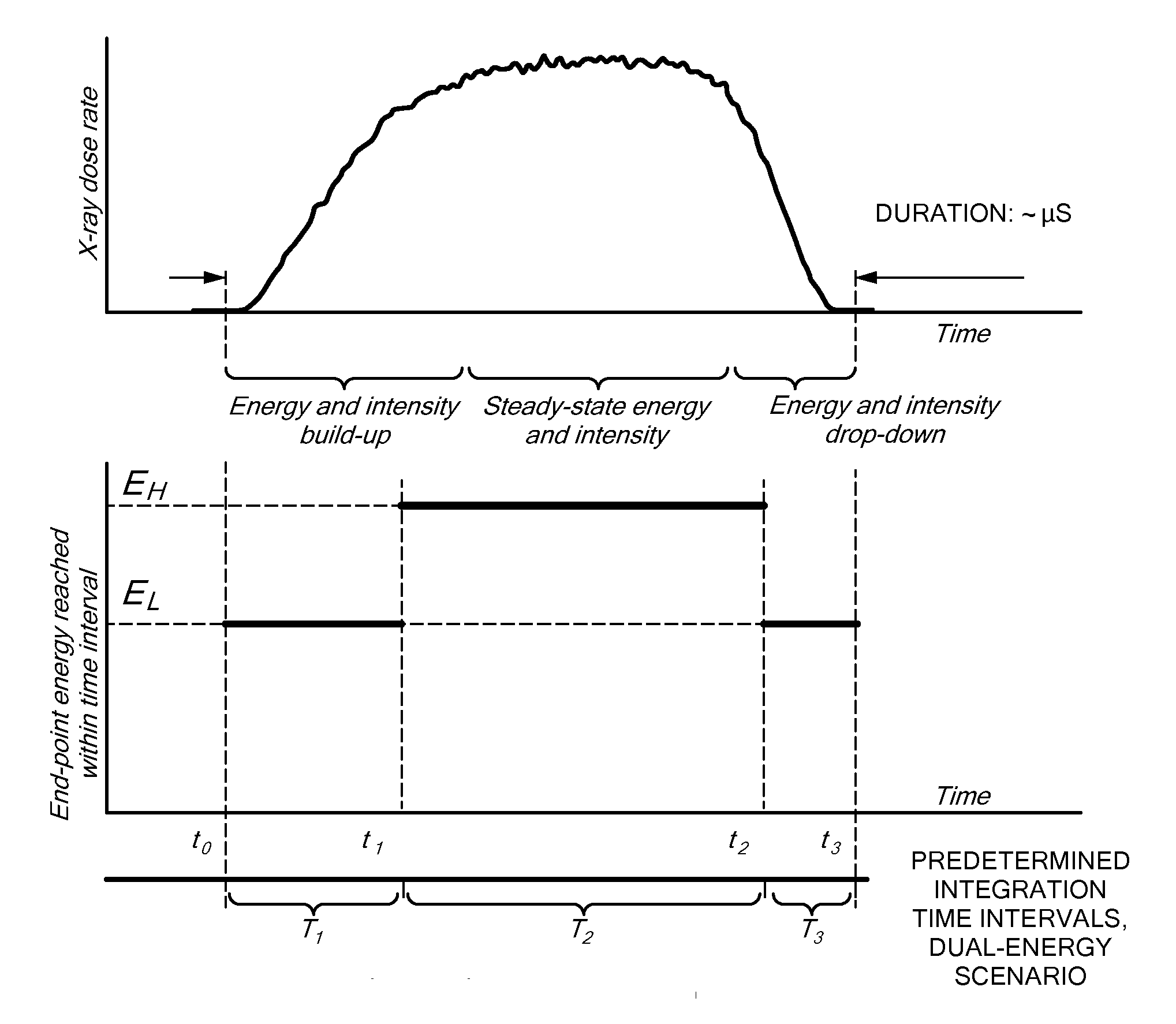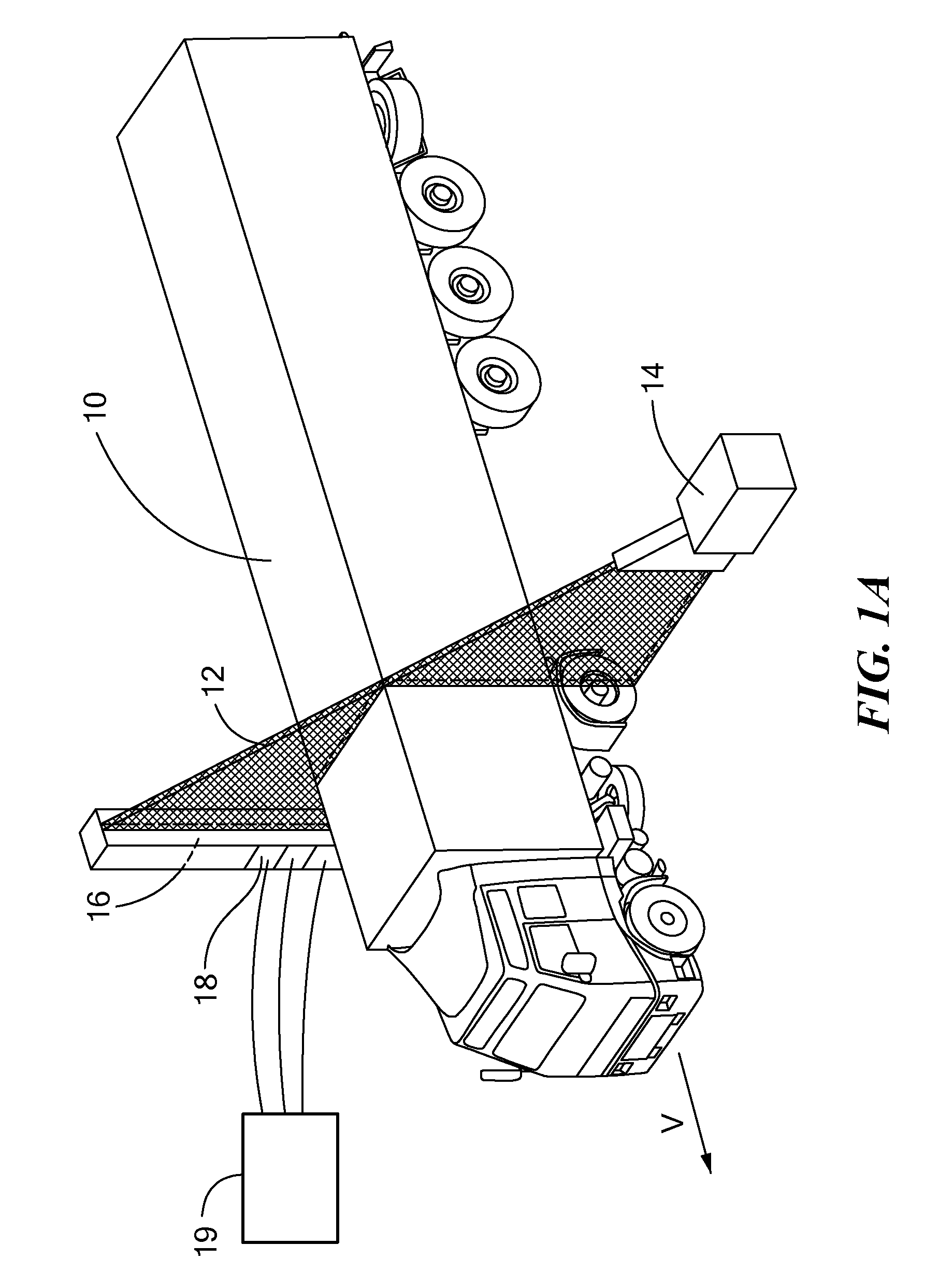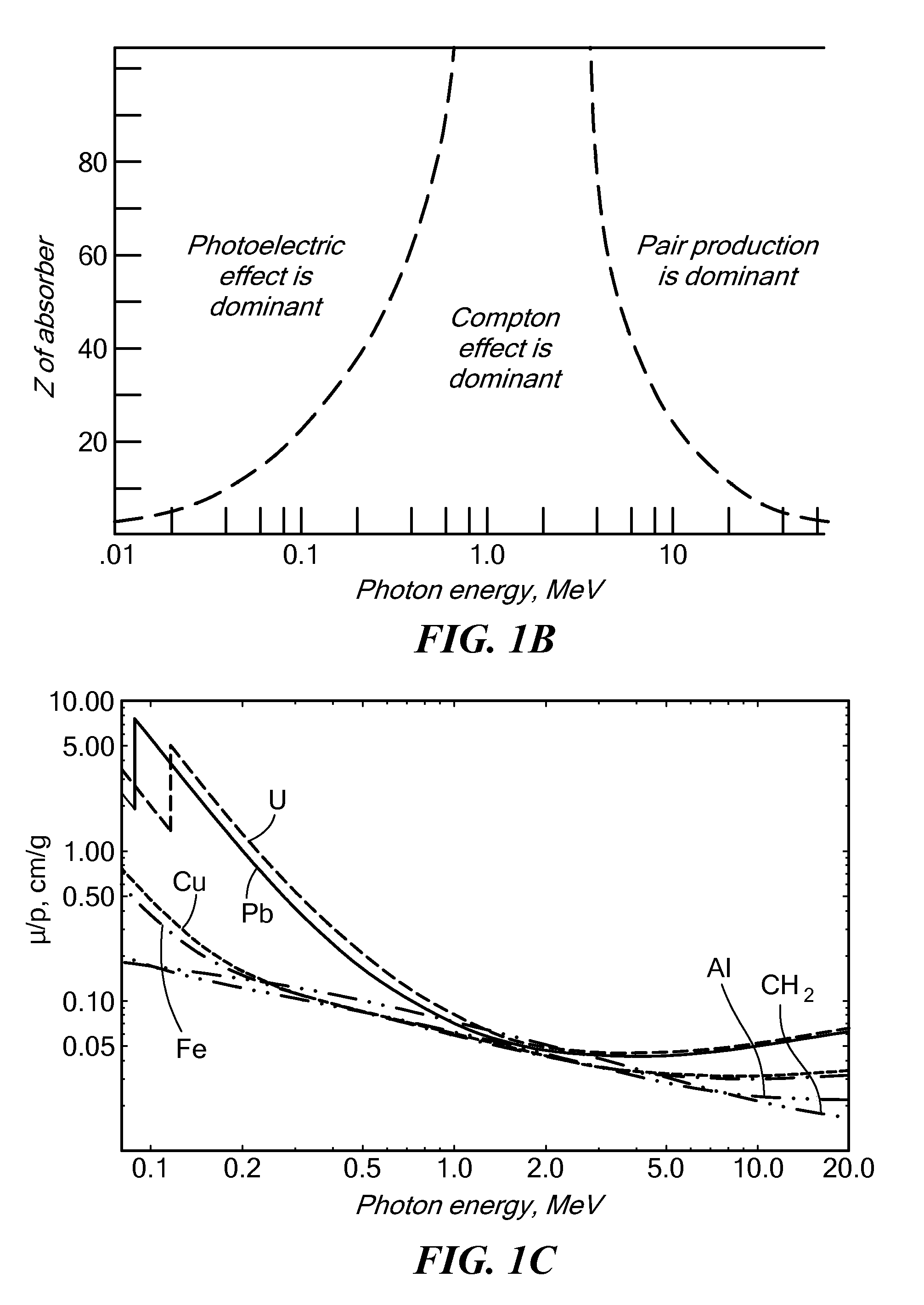System and methods for intrapulse multi-energy and adaptive multi-energy X-ray cargo inspection
a multi-energy, adaptive technology, applied in the direction of material analysis, material analysis using wave/particle radiation, instruments, etc., can solve the problems of ineffective tandem-detector configuration, extended dual energy methods, and ineffective inspection of tandem-detector configurations
- Summary
- Abstract
- Description
- Claims
- Application Information
AI Technical Summary
Benefits of technology
Problems solved by technology
Method used
Image
Examples
Embodiment Construction
[0017]In accordance with embodiments of the invention, methods and apparatus are provided for inspecting an object with x-rays. In one embodiment of the invention, a method for x-ray inspection of an object has steps of:
[0018]a. generating a temporal sequence of pulses of penetrating radiation, each pulse characterized by an onset and by a spectral content that evolves with time subsequent to the onset;
[0019]b. forming the pulses of penetrating radiation into a beam scanned across the object;
[0020]c. detecting penetrating radiation from the beam that has traversed the object and generating a detector signal; and
[0021]d. processing the detector signal to derive at least one material characteristic of the object on a basis of temporal evolution of the detector signal of at least one pulse of the sequence of pulses.
[0022]In accordance with further embodiments, the step of detecting penetrating radiation may include distinguishing signal acquired during distinct time intervals of each p...
PUM
| Property | Measurement | Unit |
|---|---|---|
| end-point energy | aaaaa | aaaaa |
| thickness | aaaaa | aaaaa |
| energy | aaaaa | aaaaa |
Abstract
Description
Claims
Application Information
 Login to View More
Login to View More - R&D
- Intellectual Property
- Life Sciences
- Materials
- Tech Scout
- Unparalleled Data Quality
- Higher Quality Content
- 60% Fewer Hallucinations
Browse by: Latest US Patents, China's latest patents, Technical Efficacy Thesaurus, Application Domain, Technology Topic, Popular Technical Reports.
© 2025 PatSnap. All rights reserved.Legal|Privacy policy|Modern Slavery Act Transparency Statement|Sitemap|About US| Contact US: help@patsnap.com



